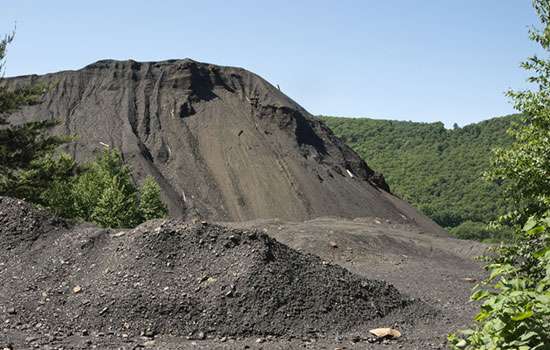Artificial soils could be key in rehabilitation of Latrobe Valley coal mines

With Hazelwood Power Station commencing its staged shutdown, creating artificial soils from waste materials could provide an environmentally friendly option for rehabilitating the adjoining mine, according to a leading mining researcher from Monash University.
Mining engineer Dr Mohan Yellishetty's research indicates that fertile artificial soil could be created using compost from local sewage treatment plants, wood chip waste from the LaTrobe Valley's Maryvale paper mill, and by-products from the mines themselves. The resulting soil could provide a safe material to partially fill or cap the massive open cut while significantly reducing the burden on local landfill sites.
Dr Yellishetty said the innovative technology was currently being tested in field trials at AGL Loy Yang mine.
"The combination of these waste materials has the potential to lead to a soil suitable for mine rehabilitation, including successful seed germination and plant growth," he said.
Using the waste products to create artificial soil would also prevent the degradation of water quality due to leaching of trace metals from mine overburden, or the rock and soil that has been removed from the mine in order to reach the coal.
Dr Yellishetty's research is just one of a suite of projects relating to mine rehabilitation being undertaken by a range of leading researchers at Monash, including:
- Progressive rehabilitation of mine slopes
- Research into changes to and management of local hydrology
- A longitudinal study into the health of residents near the Hazelwood mine
- Environmental monitoring and remote sensing of vegetation and subsidence
- Environmental law
- The development of community consultation processes
Dr Yellishetty said that thousands of job opportunities could be created in areas such as construction, technical consulting, carbon farming, tourism and horticulture, if mines across Victoria were to be progressively rehabilitated over the next 25 years.
"One of the recommendations of the Victorian Government's Hazelwood Mine Fire Inquiry (report 2015/16) was that the rate of progressive rehabilitation of Victoria's coal mines should be increased, and with this rehabilitation will likely come a range of new jobs."
Dr Yellishetty said Hazelwood had submitted plans to undertake rehabilitation at the mine; and that a deal had recently been struck to begin work on progressive rehabilitation at Loy Yang open pit mine.
"We have been in discussions with the three companies operating coal mines in the Latrobe Valley and we look forward to working closely with them to find ways to rehabilitate those sites," he said.
The research conducted by Dr Yellishetty and his colleagues will have applications well beyond the Latrobe Valley.
"Victoria's coal mines are unusually large, and therefore pose unique rehabilitation and land use transition challenges. What we learn during this process could become a blueprint for the rehabilitation of other mines around Australia and the world," Dr Yellishetty said.
Provided by Monash University


















